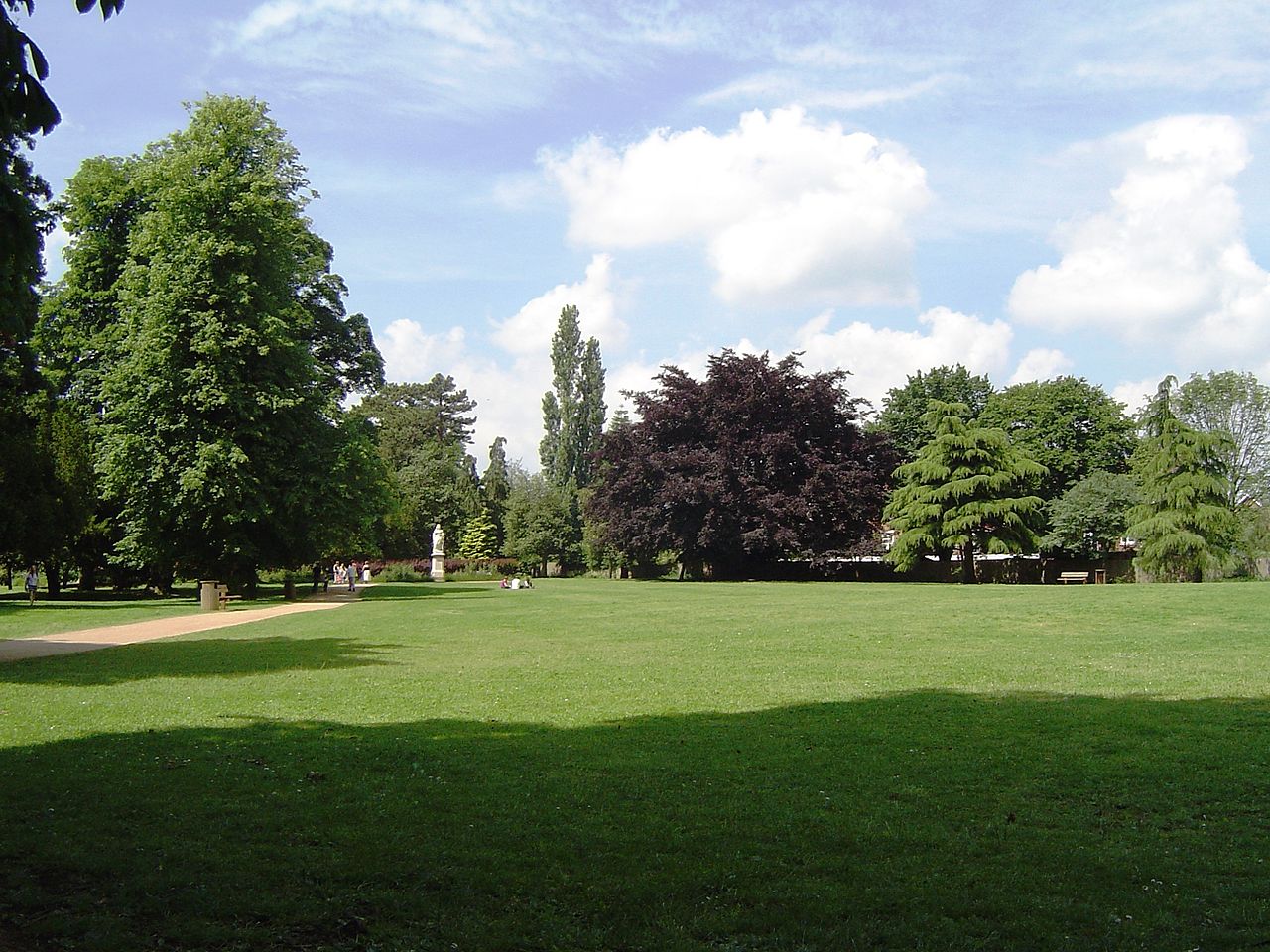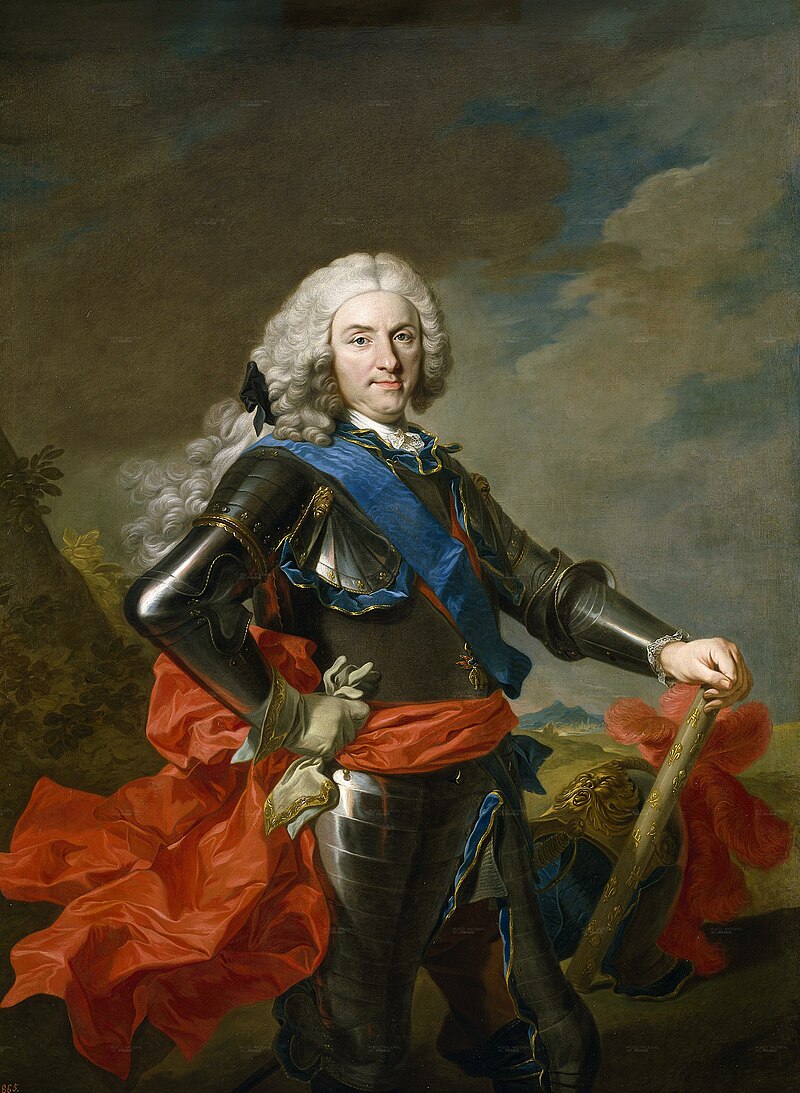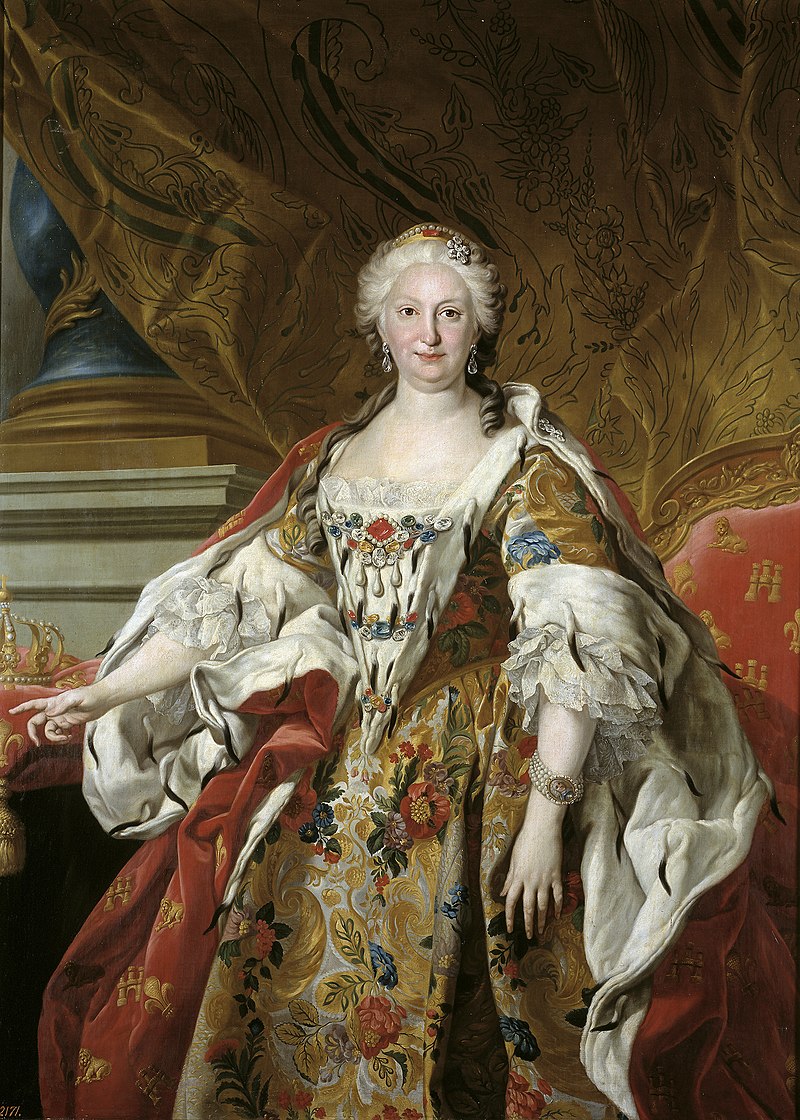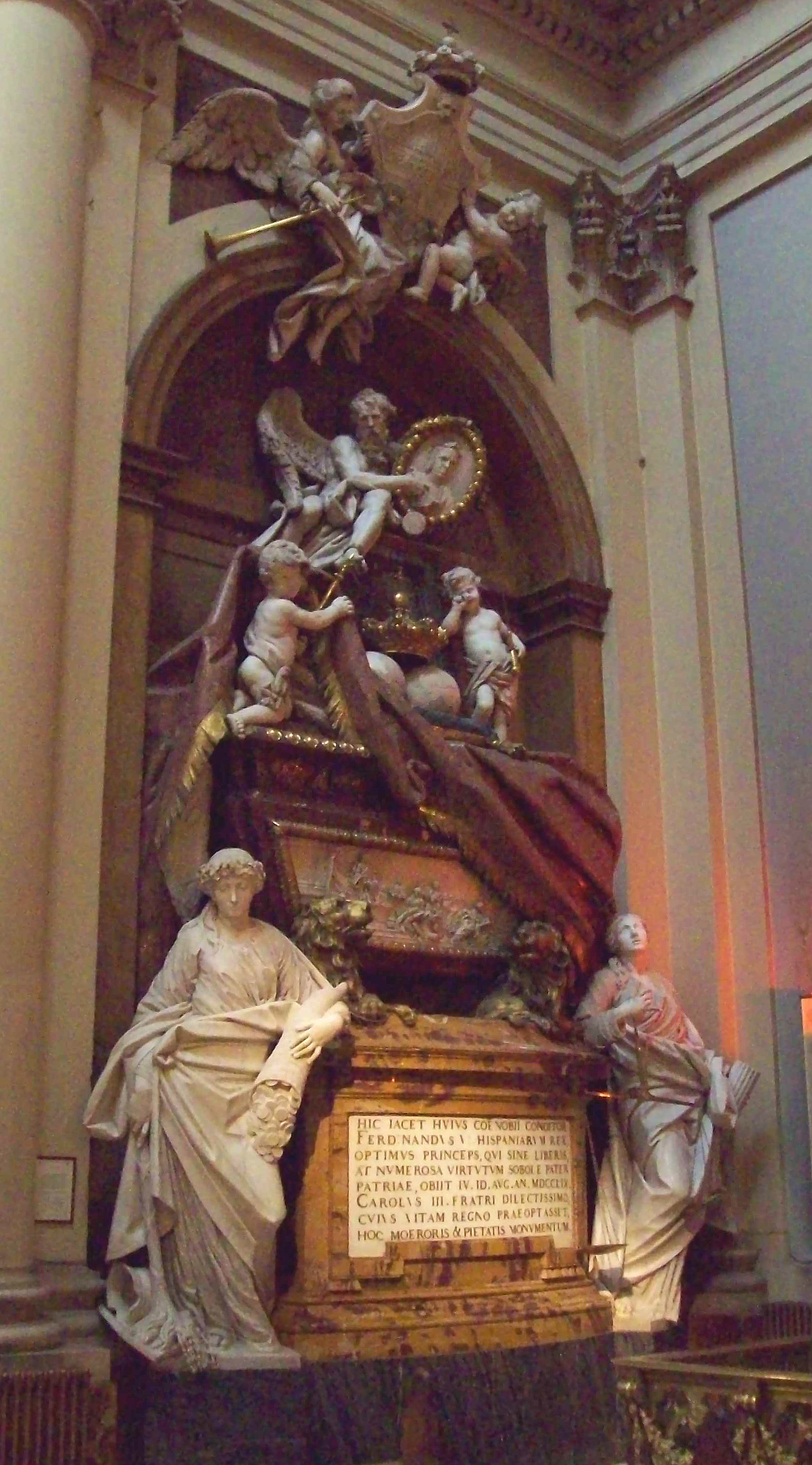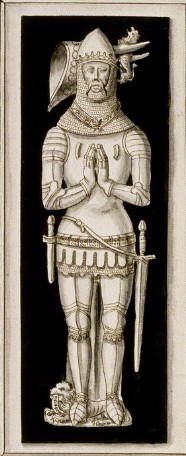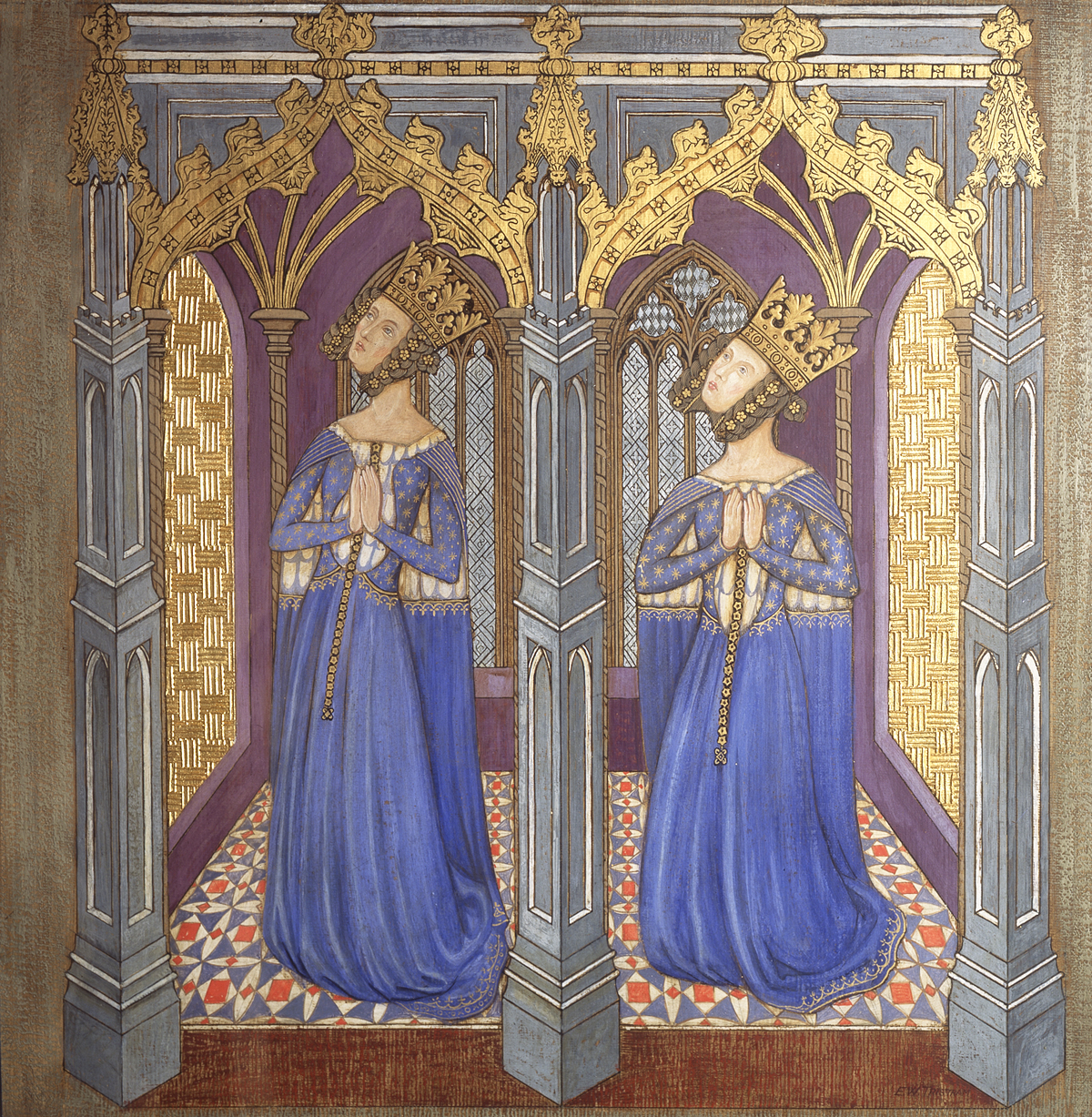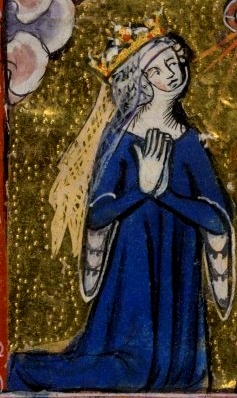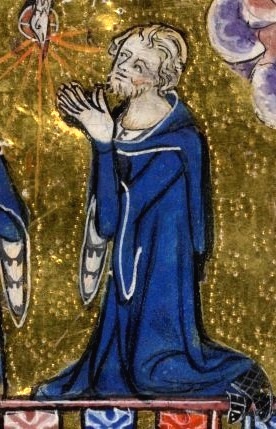by Susan Flantzer
© Unofficial Royalty 2023

Barbara of Portugal, Queen of Spain; Credit – Wikipedia
Infanta Barbara of Portugal was the wife of King Fernando VI of Spain. Born December 4, 1711, at Ribeira Palace in Lisbon, Portugal, Barbara was the eldest of the six children and the only daughter of João V, King of Portugal and Archduchess Maria Anna of Austria. Barbara’s parents remained childless for the first three years of their marriage. Her father promised God that he would build a great convent as a sign of gratitude if an heir to the throne was born. King João V fulfilled his promise and built the Palace-Convent of Mafra located in Mafra, Portugal, a short distance from Lisbon.

The facade of the Palace-Convent of Mafra; Credit – By Pedro S Bello – Own work, CC BY-SA 4.0, https://commons.wikimedia.org/w/index.php?curid=124113359
At birth, Barbara was styled Princess of Brazil as the heir presumptive and given the names Maria Madalena Bárbara Xavier Leonor Teresa Antónia Josefa, honoring several saints and relatives. She was called Barbara, a name that had never been used in the Portuguese royal family, after Saint Barbara whose feast day was on her birthday. Barbara’s paternal grandparents were Pedro II, King of Portugal and his second wife Maria Sophia of Neuburg. Her maternal grandparents were Leopold I, Holy Roman Emperor and his third wife Eleonore Magdalene of Neuburg. Barbara’s grandmothers were sisters and so her parents were first cousins.

The two eldest children in the family, Barbara with her brother Pedro who died at the age of two; Credit – Wikipedia
Barbara had five younger brothers. Two of her brothers died in childhood and one died in his teens. The surviving two brothers were both Kings of Portugal. After the birth of her brother Pedro, Barbara was no longer the heir presumptive. Pedro died when he was two but by that time Barbara had another brother, the future King José I of Portugal.
- Infante Pedro of Portugal (1712 – 1714), died in early childhood
- José I, King of Portugal (1714 – 1777), married Mariana Victoria of Spain, had four daughters including his successor Maria I, Queen of Portugal who married her paternal uncle Pedro (below)
- Infante Carlos of Portugal (1716 – 1736), died of a high fever, aged 19
- Pedro III, King of Portugal (1717 – 1786), married his niece Maria I, Queen of Portugal, and was her co-ruler, had six children
- Infante Alexandre of Portugal (1723 – 1728), died in childhood from smallpox

Barbara in 1725 Credit – Wikipedia
Barbara received an excellent education. She spoke Portuguese, French, German, and Italian fluently, and would later learn Spanish after her marriage. Like her father she loved music. When Barbara was eight years old, her father hired the great Italian harpsichordist and composer Domenico Scarlatti as her music master and music director of the Royal Chapel. Barbara became a talented keyboard player and when she married in 1729, Scarlatti followed her to Spain and composed hundreds of harpsichord sonatas for her. Scarlatti remained Barbara’s music master until he died in 1757, a year before Barbara died.
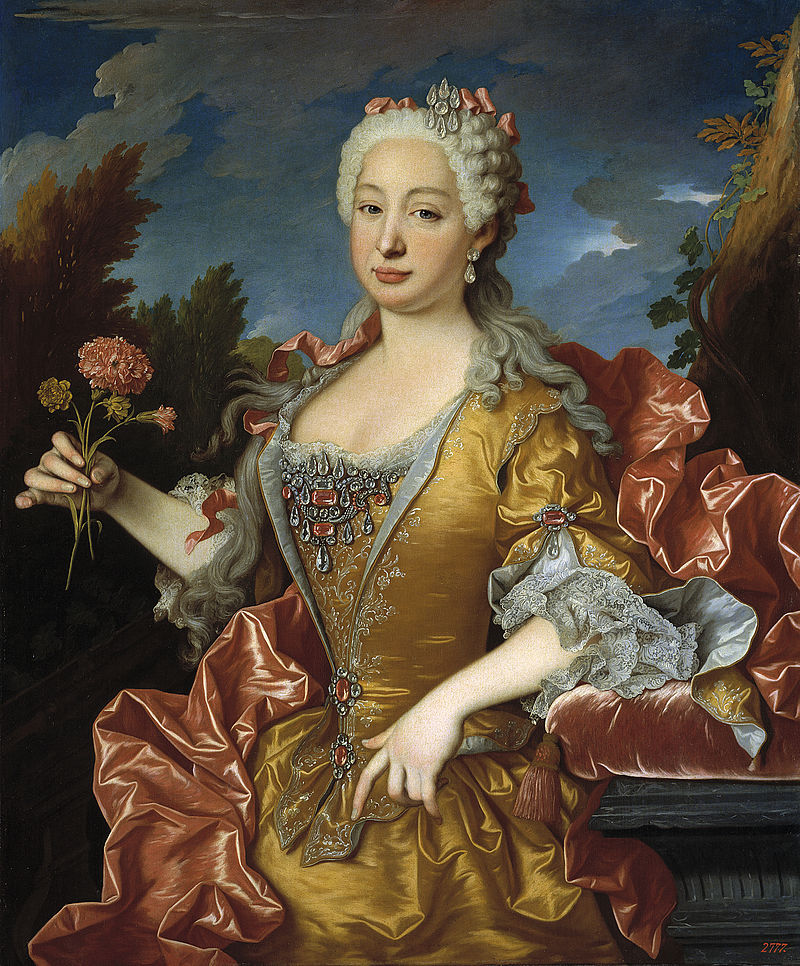
Barbara in 1729, the year of her marriage; Credit – Wikipedia
In 1725, Barbara was on a list of 99 princesses who were potential brides for King Louis XV of France. However, because of concerns about her health and her young age, she was removed from the list. To strengthen an alliance with Spain, a double marriage between Portugal and Spain was arranged between Barbara and the future Fernando VI, King of Spain, the son and heir of Felipe V, King of Spain, and Barbara’s brother the future José I, King of Portugal, her father’s heir, and Fernando’s half-sister Mariana Victoria of Spain.

A contemporary engraving depicting the Exchange of the Princesses over the Caia River on the Portugal-Spain border; Credit – Wikipedia
In a complex and protocol-filled arrangement called the Exchange of Princesses, on January 19, 1729, the two sets of princes and princesses were escorted to the Portugal-Spain border by the two royal courts, and the princesses were exchanged in a richly decorated wooden pavilion built on a bridge over the Caia River that linked the towns of Elvas, Portugal and Badajoz, Spain. Then, both couples were married in richly decorated pavilions on the same day on the grooms’ sides of the Caia River. Fernando and Barbara had no children except a stillborn son in 1733.

Barbara’s husband Fernando; Credit – Wikipedia
Barbara’s father-in-law King Felipe V suffered from mental instability and as he grew older, his mental issues worsened, and his second wife Elisabeth Farnese of Parma became the de facto ruler of Spain. Queen Elisabeth never showed affection toward her stepson Fernando. She considered him an obstacle to achieving her main objective: to provide her sons with King Felipe V of Spain with a realm to rule. Fernando and Barbara continually had to deal with the animosity of Queen Elisabeth who wanted to keep her stepson away from court. From 1733 until 1737, they were kept more or less under house arrest in their apartments, prevented from appearing in public, and watched by the spies of Queen Elisabeth, until Barbara’s father King João V of Portugal intervened.
Felipe V, King of Spain died of a stroke at the age of 62 on July 9, 1746, and Fernando succeeded to the Spanish throne. Fernando VI, King of Spain reigned for thirteen years. Benevolent but weak, Fernando VI left the government mostly to others. He allowed his troublesome stepmother Elisabeth to remain in Spain but banned her from court. As Queen Consort of Spain, Barbara did not have as much political ambition as Fernando’s stepmother Elisabeth. Instead, Barbara was focused mainly on a friendly relationship between Spain and Portugal. However, Barbara was the conduit through which the government ministers worked with King Fernando VI. She was presented with all documents of state before they were given to King Fernando VI because only she knew what should be said or hidden from him.

Barbara shortly before her death; Credit – Wikipedia
Barbara suffered from severe asthma for most of her life and became obese in the years before her death. On August 27, 1758, at the age of 46, Barbara died at the Royal Palace of Aranjuez, on the outskirts of Madrid, Spain. She was buried in the Church of Saint Barbara at the Convent of the Salesas Reales in Madrid, Spain which she had founded in 1748 as a school and home for young noblewomen. Barbara’s death broke Fernando’s heart. During the last year of his reign, probably at least partially caused by his wife’s death, Fernando VI rapidly lost his mental capacity. He lived at the Castle of Villaviciosa de Odón, near Madrid, where he died less than a year after Barbara’s death, on August 10, 1759, as the age of 45. Fernando was buried with his wife Barbara in the Church of Saint Barbara at the Convent of the Salesas Reales in Madrid.

Tomb of Barbara of Portugal; Queen of Spain; Credit – www.findagrave.com
This article is the intellectual property of Unofficial Royalty and is NOT TO BE COPIED, EDITED, OR POSTED IN ANY FORM ON ANOTHER WEBSITE under any circumstances. It is permissible to use a link that directs to Unofficial Royalty.
Works Cited
- Bárbara de Braganza (2022) Wikipedia (Portuguese). Wikimedia Foundation. Available at: https://es.wikipedia.org/wiki/B%C3%A1rbara_de_Braganza (Accessed: November 28, 2022).
- Bárbara de Braganza (2022) Wikipedia (Spanish). Wikimedia Foundation. Available at: https://es.wikipedia.org/wiki/B%C3%A1rbara_de_Braganza (Accessed: November 28, 2022).
- Flantzer, Susan. (2022) João V, King of Portugal, Unofficial Royalty. Available at: https://www.unofficialroyalty.com/joao-v-king-of-portugal/ (Accessed: November 28, 2022).
- Flantzer, Susan. (2023) Fernando VI, King of Spain, Unofficial Royalty. Available at: https://www.unofficialroyalty.com/fernando-vi-king-of-spain/ (Accessed: November 28, 2022).
- Maria Bárbara de Bragança, Rainha de Espanha (2022) Wikipedia (Portuguese). Wikimedia Foundation. Available at: https://pt.wikipedia.org/wiki/Maria_B%C3%A1rbara_de_Bragan%C3%A7a,_Rainha_de_Espanha (Accessed: November 28, 2022).




